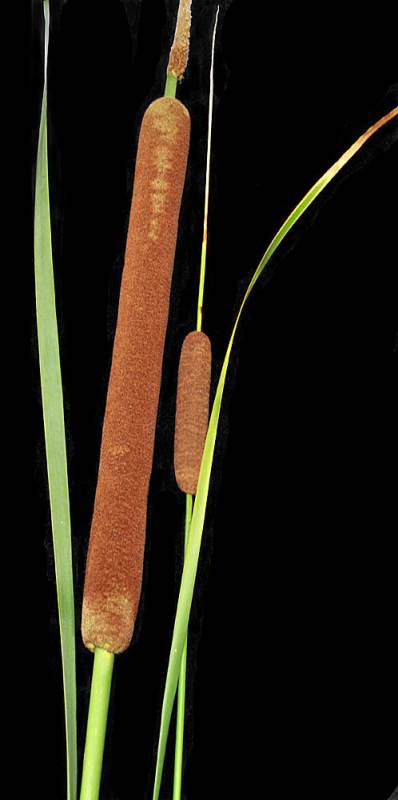Hosted by the University of Washington Herbarium, Burke Museum
Publication: Sp. Pl. 2: 971. 1753.
Origin: Introduced from Europe and/or eastern North America
Herbarium search: CPNWH
Notes: FNA22:"Prior to N. Hotchkiss and H. L. Dozier (1949), Typha domingensis was generally included within T. angustifolia in North America. Because of many misidentified specimens, range expansion in recent years, and undercollecting, the distribution on the margins of the main range is somewhat uncertain. Many literature reports are based on misidentified specimens. Some workers suggested T. angustifolia was early introduced from Europe into Atlantic Coastal North America and migrated westward (R. L. Stuckey and D. P. Salamon 1987). In recent decades it has expanded its range in many regions and become much more abundant, especially in roadside ditches and other highly disturbed habitats. For example, although it was known only from one Wisconsin station in 1929 (N. C. Fassett 1930) and was very local in Iowa in 1939 (A. Hayden 1939), it is now common and widespread in both states. As it often out-competes many native marsh species to produce very dense, pure stands, and hybridizes with T. latifolia to form the probably even more competitive T. glauca, T. angustifolia and T. glauca should perhaps be classified as noxious weeds in parts of North America. Beyond the main range of T. angustifolia, there are specimens of T. glauca from north-central Montana (Phillips County.), west-central Manitoba (La Pas), and Anticosti Island, Quebec. There are m Many erroneous reports have come from outside of Europe and North America. For hybrids see also genus and key."
References:
Last updated 7/8/2019 by David Giblin.

